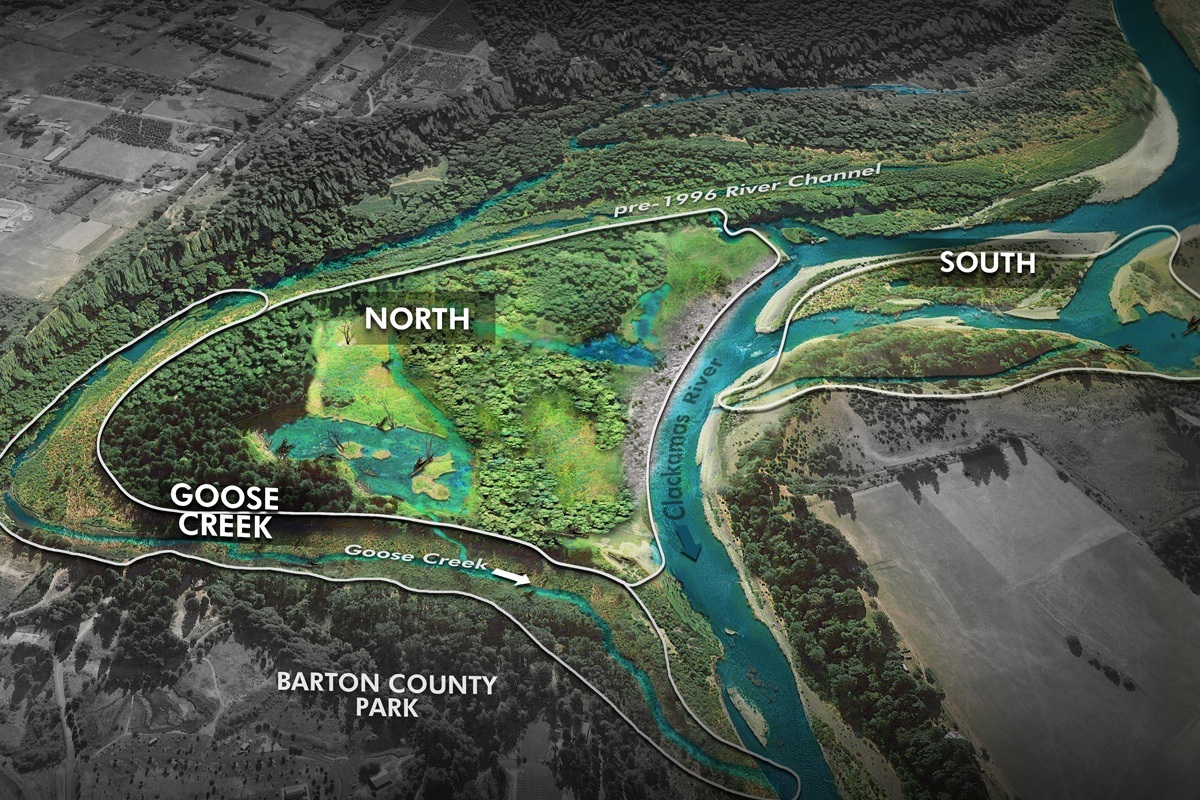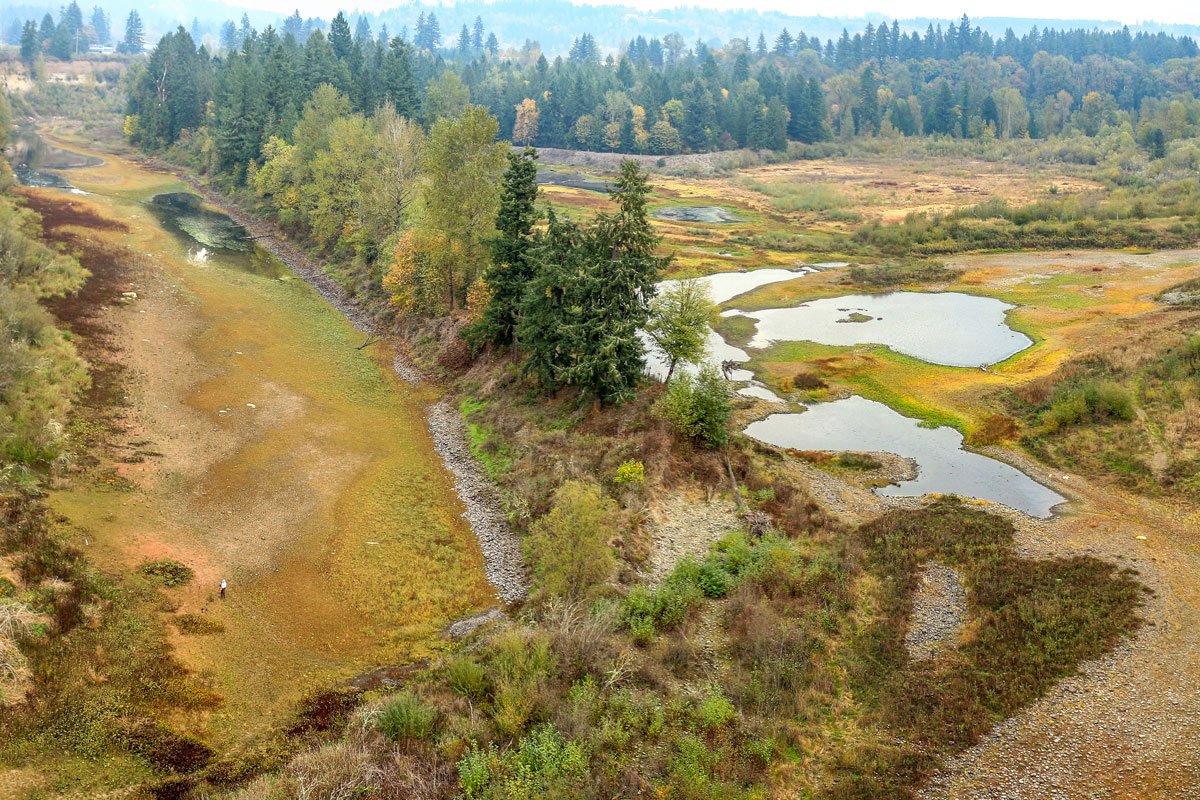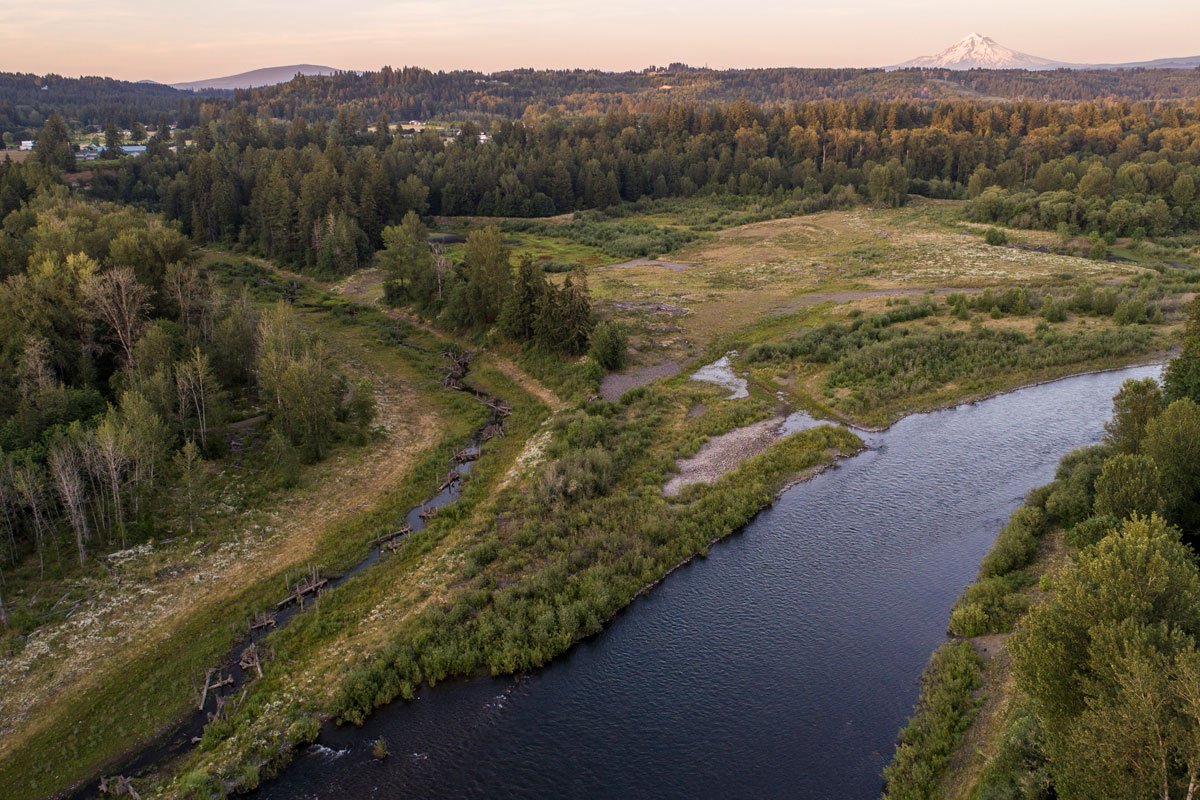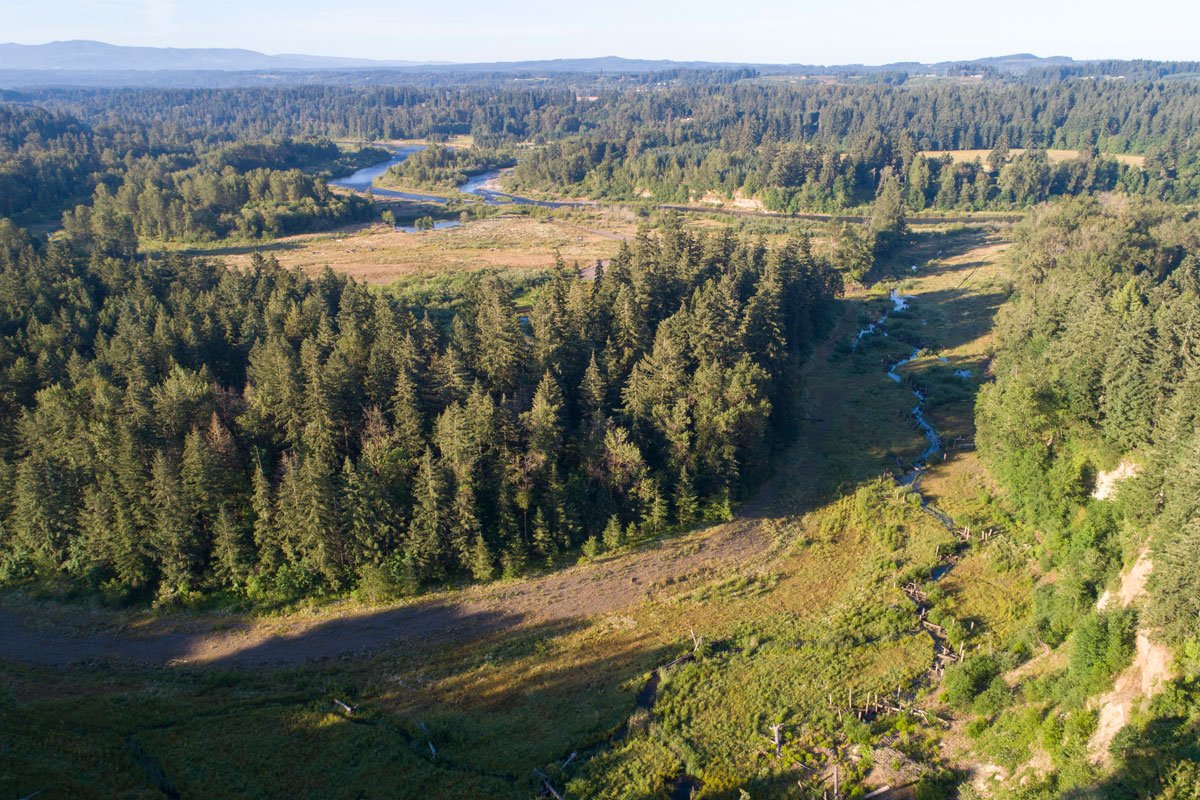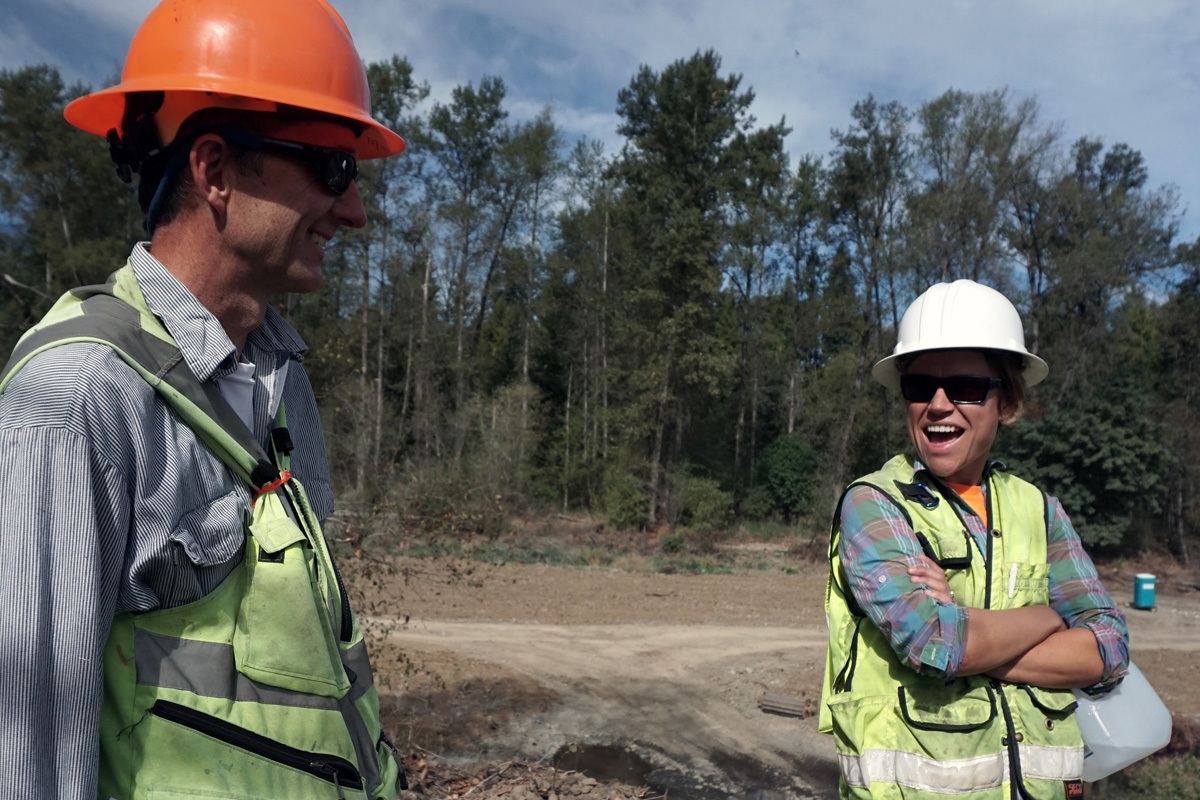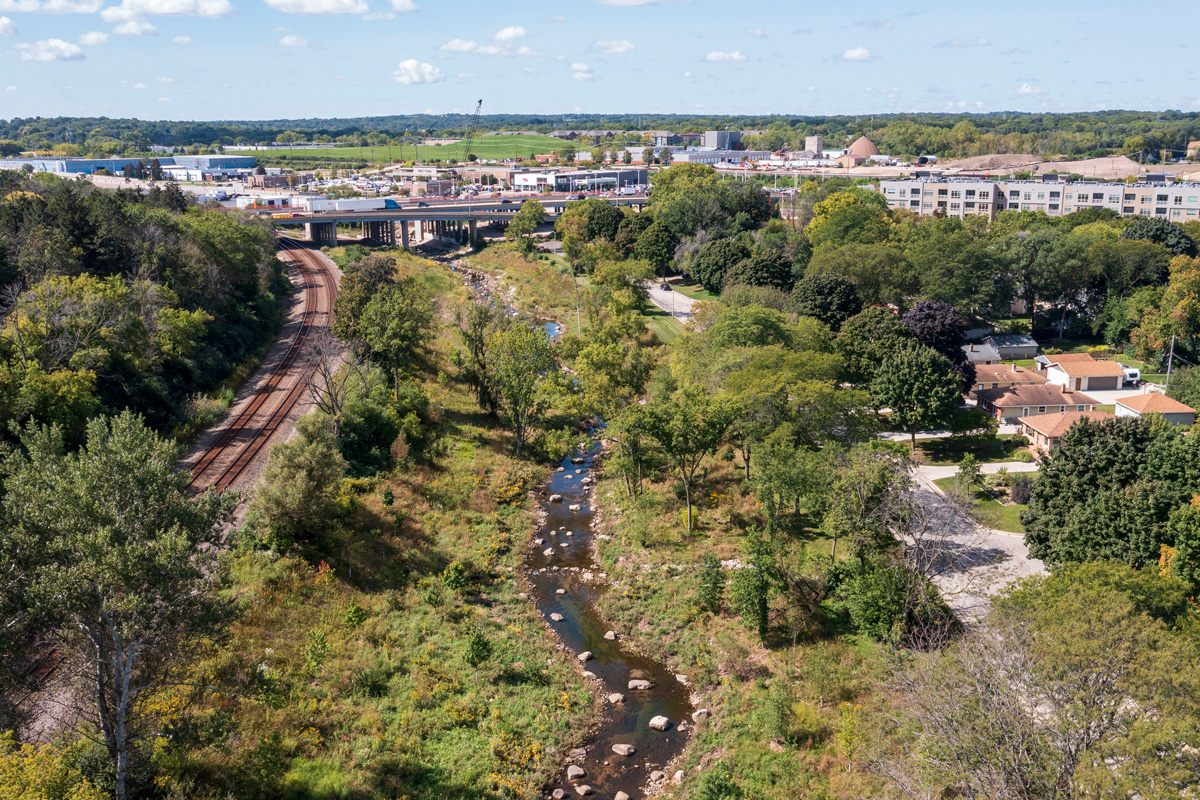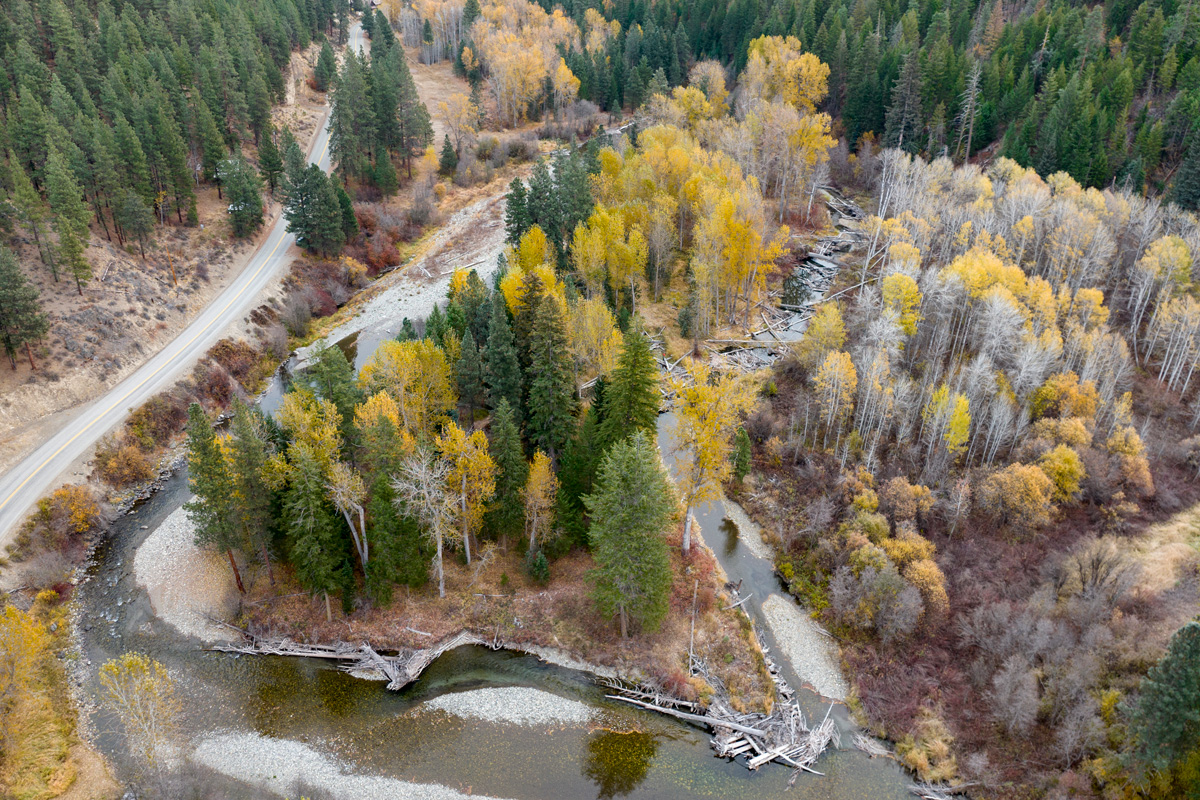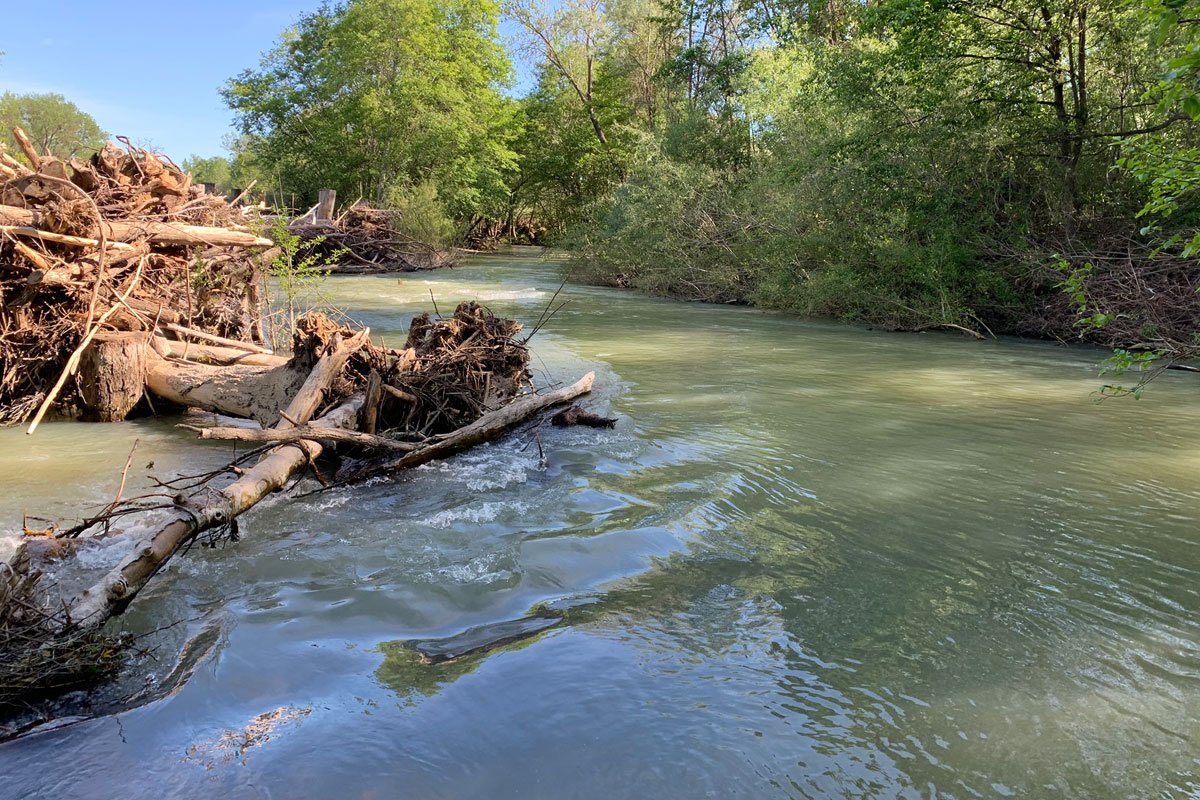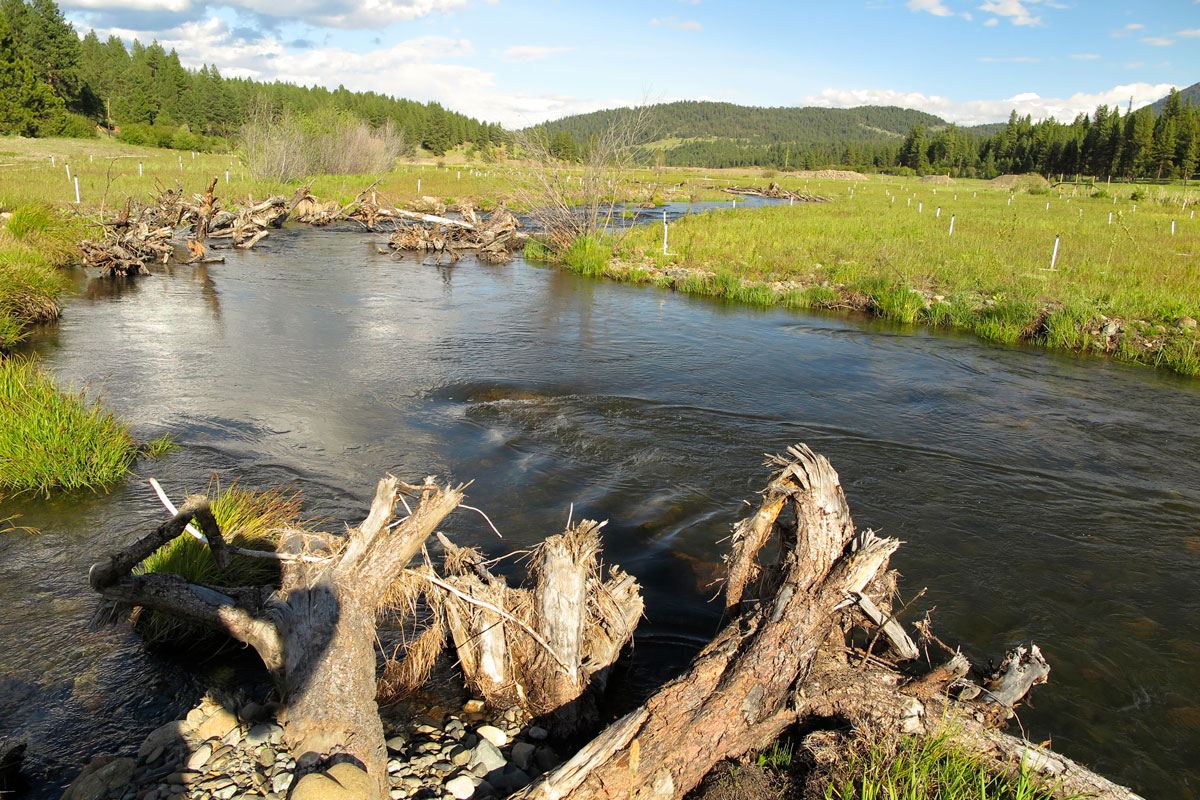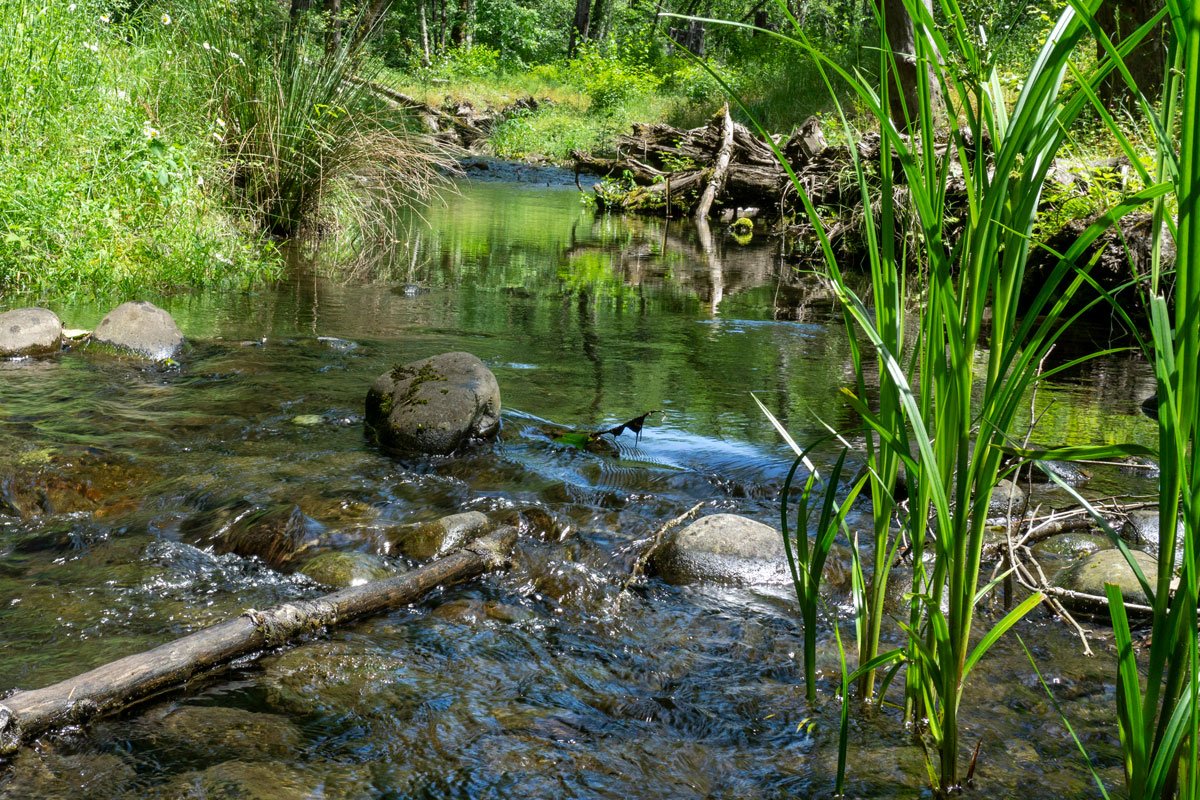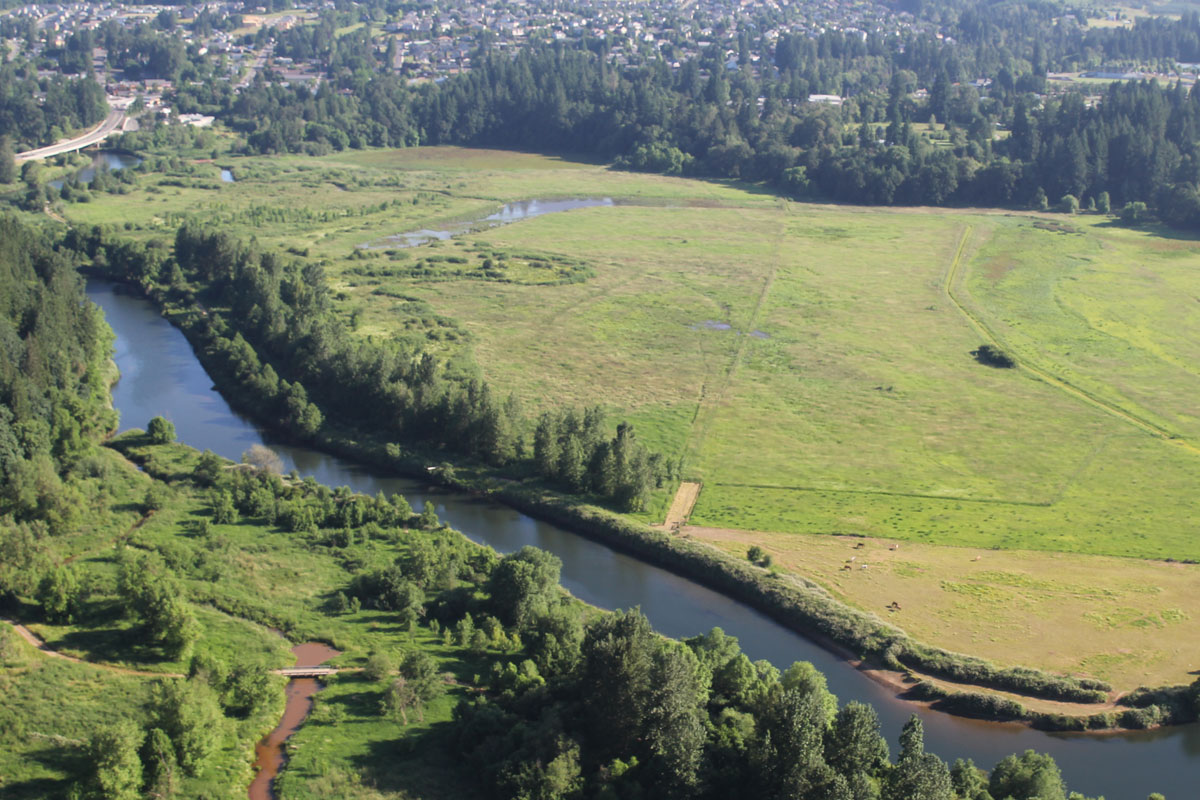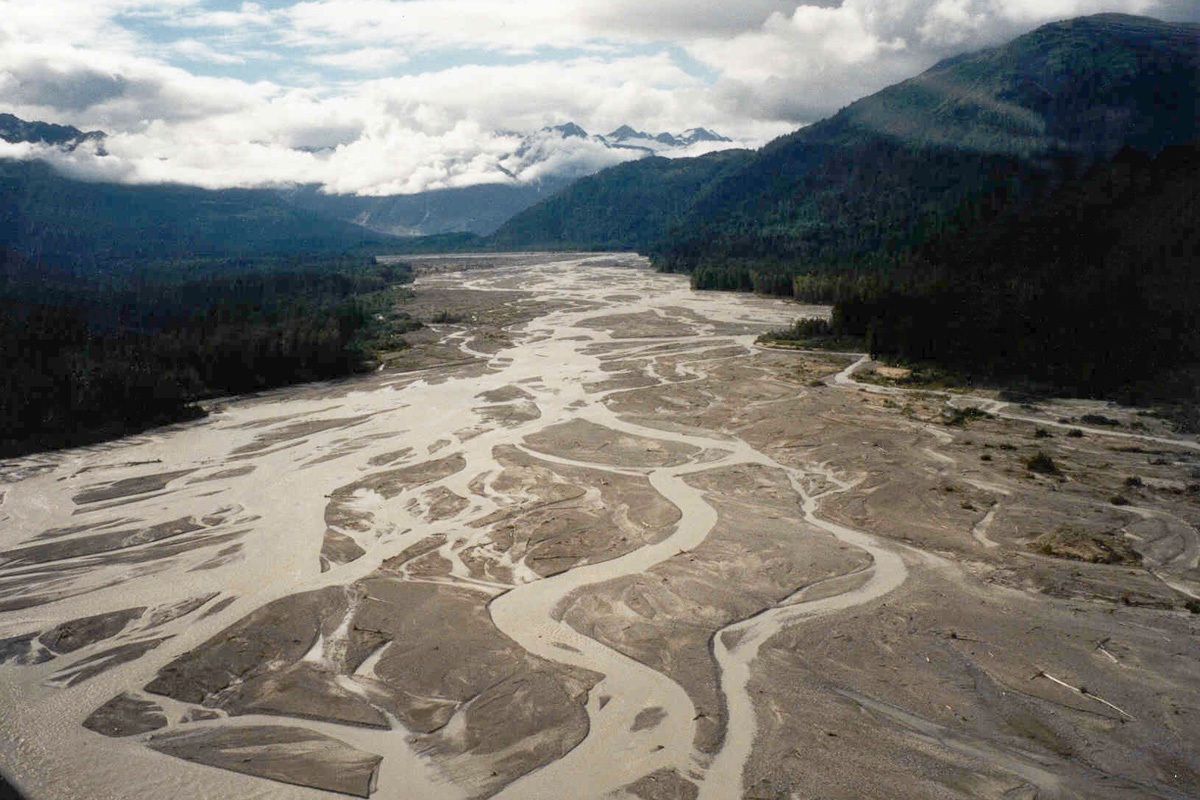River Island Channel & Floodplain Restoration
Metro, a regional government body, contracted Inter-Fluve to restore an abandoned gravel mine on the Clackamas River. In 1996 a 100-year rain-on-snow flood event caused the mainstem Clackamas River to breach a levee and flow through this active gravel mining operation. Goals of the project included: to strategically implement restoration actions in areas where existing processes are insufficient to create or maintain highly functioning habitats, restoring perennially hydrologic connectivity to tributary habitats, and supporting multiple values including salmonids, stillwater species, and wildlife habitat, riparian and floodplain forests, water quality and recreation.
Inter-Fluve developed design plans and oversaw construction for the property including rebuilding riparian-forested wetlands at the gravel mine site, and reconnecting Goose Creek – a Clackamas River tributary – to the Clackamas River mainstem to provide 3,500 feet of rearing habitat for juvenile salmonids. Because of its location within the Portland Metro Area, stakeholder and public outreach and communication were a critical component of the project efforts. The two phases of construction were completed in 2015 and 2016, totaling over $4 million dollars of habitat restoration.
Inter-Fluve received a 2018 Engineering Excellence Award from the American Council of Engineering Companies (ACEC) Oregon for our work on the River Island Restoration project.
